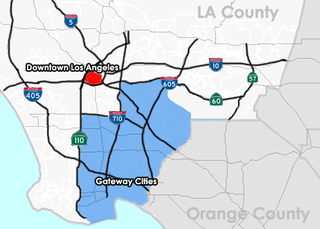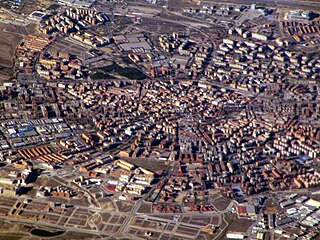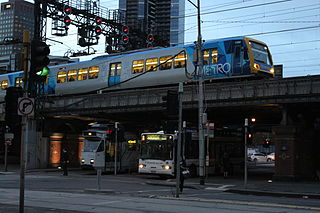Reticular Matrix Planning methodology
The Madrid Plan used Reticular Matrix Planning methodology (Ordenacion Reticular del Territorio - ORT).
Metropolitan Madrid has a natural directionality along the Sierra de Guadarrama mountain ridge. This main directionality, along with the Tagus valley, has produced a natural pattern of reticular human settlements. The Madrid Plan used this natural pattern to constitute the basic reticular board for larger transportation infrastructure. The traditional radial-orbital system of metropolitan growth was transformed into a large grid-reticular system.
The metropolitan system was decomposed into five subsystems:
- Environmental ('Green' infrastructure)
- Transportation ('Grey' infrastructure)
- Housing
- Economic activities
- Social facilities
The last three subsystems exist within the compatible, continuous networks of the 'Green' and 'Grey' infrastructure subsystems.
The metropolitan territorial system was composed of two layers of scale intervention:
- The Urban layer (scale 1:5,000), which constituted the ‘fabric’ of the metropolitan system and was conformed according to an urban location model called the BUD (Balanced Urban Development - Unidad de Desarrollo Equilibrado)
- The Metropolitan layer (scale 1:50,000), which constituted the ‘form’ of the metropolitan system and articulated the structure of the metropolis with regional and national functions
The urban layer corresponded to the municipal authority. The metropolitan layer corresponded to the regional (Comunidad) authority.

Commuter rail, or suburban rail, is a passenger rail transport service that primarily operates within a metropolitan area, connecting commuters to a central city from adjacent suburbs or commuter towns. Generally commuter rail systems are considered heavy rail, using electrified or diesel trains. Distance charges or zone pricing may be used.
The Metropolitan Transit Authority of Harris County is a major public transportation agency based in Houston, Texas, United States. It operates bus, light rail, bus rapid transit, HOV and HOT lanes, and paratransit service in the city as well as most of Harris County. It also operates bus service to two cities in Fort Bend County, and to Conroe in Montgomery County. The Metro headquarters are in the Lee P. Brown Administration Building in Downtown Houston.

The Gateway Cities Region, or Southeast Los Angeles County is a largely urbanized region located in southeastern Los Angeles County, Southern California between the City of Los Angeles, Orange County, and the Pacific Ocean. The cluster of cities acquired the name because they are situated literally as the "gateway" between the two counties, with the central city of Cerritos located equidistant from downtown LA, Long Beach, and the center of Orange County. It is part of the Los Angeles-Long Beach-Anaheim, CA Metropolitan Statistical Area (MSA), and has a population of approximately two million.

Los Angeles has a complex multimodal transportation infrastructure, which serves as a regional, national and international hub for passenger and freight traffic. The system includes the United States' largest port complex; an extensive freight and passenger rail infrastructure, including light rail lines and rapid transit lines; numerous airports and bus lines; vehicle for hire companies; and an extensive freeway and road system. People in Los Angeles rely on cars as the dominant mode of transportation, but since 1990 Los Angeles Metro Rail has built over one hundred miles (160 km) of light and heavy rail serving more and more parts of Los Angeles.

Móstoles is municipality of Spain located in the Community of Madrid. With over two hundred thousand inhabitants, it is the region's second most populated municipality after Madrid. Móstoles was for a long time a small town, but expanded rapidly in the second half of the 20th century.

Transport in Melbourne, the state capital of Victoria, Australia, consists of several interlinking modes. Melbourne is a hub for intercity, intracity and regional travel. Road-based transport accounts for most trips across many parts of the city, facilitated by Australia's largest freeway network. Public transport, including the world's largest tram network, trains and buses, also forms a key part of the transport system. Other dominant modes include walking, cycling and commercial-passenger vehicle services such as taxis. Melbourne is a busy regional transport hub for the statewide passenger rail network, coaches and interstate rail services to New South Wales and South Australia. Freight transport also makes up a significant proportion of trips made on the network from the Port of Melbourne, Melbourne Airport and industrial areas across the city.

Cercanías Madrid is the commuter rail service that serves Madrid, the capital of Spain, and its metropolitan area. It is operated by Cercanías Renfe, the commuter rail division of RENFE, the former monopoly of rail services in Spain. The system is known for being the target of the 11 March 2004 Madrid train bombings. The total length spans 370 km.

An extensive multi-modal transport system serves the state of New South Wales, Australia. The lead government agency responsible for the network's operation and development is Transport for New South Wales.

Coslada is a city and municipality in the autonomous community of Madrid in central Spain.

Line 10 of the Madrid Metro is a rapid transit line in Madrid that is actually the product of two formerly separate lines. Today the route begins at Hospital Infanta Sofía and ends at Puerta del Sur (Alcorcón). Passengers must transfer at Tres Olivos between the "line 10A" segment, which covers the portion of the route south of the station, and "line 10B," which extends north to Hospital Infanta Sofía.

Line 5 is a rapid transit line in the Madrid Metro system since 5 June 1968. It is the fourth most used line of the Madrid system, transporting 64 million passengers a year. It is 27 kilometers long.

Metropolitan Area of Bogotá is the metropolitan area of the Colombian capital city of Bogotá, usually used for statistical analysis or technical use.
Public transportation in Phoenix, Arizona consists primarily of buses, a 20-mile (32 km) light rail system, and minor additional services. Most transit services run under the name Valley Metro; local cities, counties, and other agencies in the Phoenix area have agreed to use the Valley Metro name. Public transport in the Greater Valley of the Sun exists in a number of modes: local, express, and RAPID commuter buses; neighborhood circulators; dial-a-ride; vanpool service; an online carpool-matching system, and METRO light rail.

Transportation in metropolitan Detroit is provided by a system of transit services, airports, and an advanced network of freeways which interconnect the city of Detroit and the Detroit region. The Michigan Department of Transportation (MDOT) administers the region's network of major roads and freeways. The region offers mass transit with bus services provided jointly by the Detroit Department of Transportation (DDOT) and the Suburban Mobility Authority for Regional Transportation (SMART) through a cooperative service and fare agreement administered by the Regional Transit Authority (RTA). Cross border service between the downtown areas of Windsor and Detroit is provided by Transit Windsor via the Tunnel Bus. A monorail system, known as the People Mover, operates daily through a 2.94 mile (4.7 km) loop in the downtown area. A proposed SEMCOG Commuter Rail could link New Center, Dearborn, Detroit Metropolitan Airport, and Ann Arbor with access to DDOT and SMART buses. Amtrak's current passenger facility is north of downtown in the New Center area. Amtrak provides service to Detroit, operating its Wolverine service between Chicago, Illinois, and Pontiac. Greyhound Lines operates a station on Howard Street near Michigan Avenue. The city's dock and public terminal receives cruise ships on International Riverfront near the Renaissance Center which complements tourism in metropolitan Detroit.
Metropolitan Reticular Matrix Planning is an approach to managing the growth of metropolises. It is a type of regional planning, as it deals with issues beyond strict city limits. It was first applied to the Madrid Metropolitan Plan in 1996 and has since been applied to a number of other metropolises.

The Madrid city of Parla has a circular tram which provides transportation within the city as well as to the rest of the metropolitan area. This network is standard gauge which facilitates compatibility and vehicle interchangeability with other lines built or planned in the Community of Madrid. The main shareholder of the company is Globalvia with 85%, and then CCM with 15%.

The National Capital Region Transport Corporation (NCRTC) - a Joint Venture company of Government of India and States of Delhi, Haryana, Rajasthan and Uttar Pradesh is mandated for implementing the Regional Rapid Transit System (RRTS) project across the National Capital Region (NCR), ensuring a balanced and sustainable urban development through better connectivity and access.
îThe Metro Manila Dream Plan, formally titled the Roadmap for Transport Infrastructure Development for Metro Manila and Its Surrounding Areas, refers to an integrated plan for improving the transport system in Metro Manila, Philippines, with the hope of turning it into a focal point for addressing Metro Manila's interlinked problems in the areas of transportation, land use, and environment.
Ahmedabad Suburban Railway is a planned regional rail system in the city of Ahmedabad, Gujarat, India.

Madrid is served by highly developed transport infrastructure. Road, rail and air links are vital to maintain the economic position of Madrid as a leading centre of employment, enterprise, trade and tourism, providing effective connections with not only other parts of the region, but also the rest of Spain and Europe as a whole. Three quarters of a million people commute into the city to work, and these and other local travellers have available a high-capacity metropolitan road network and a well-used public transport system based on the Metro, the Cercanías local railways, and a dense network of bus routes.

















